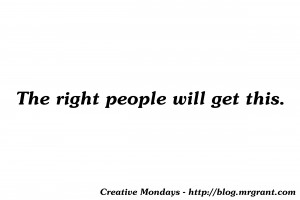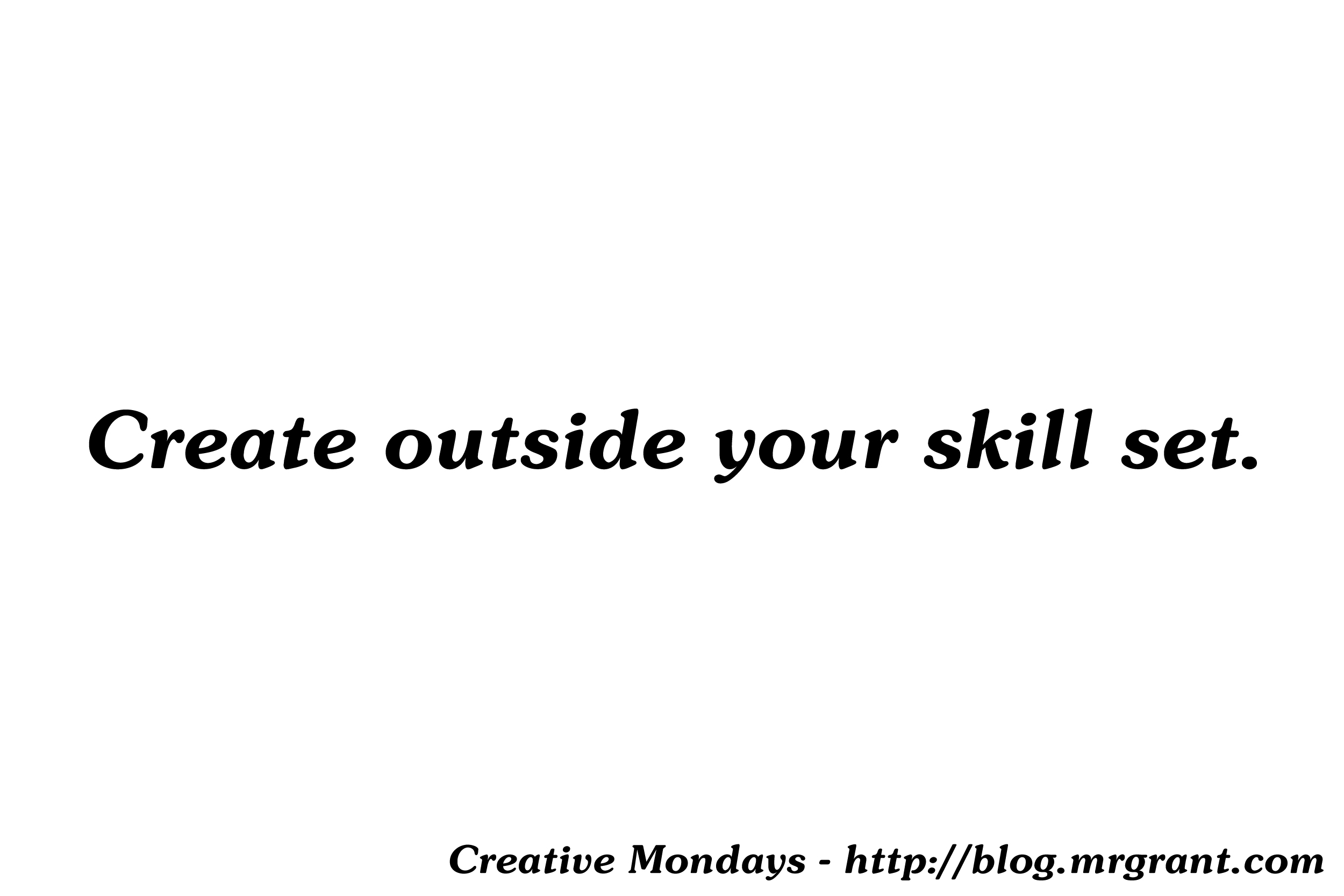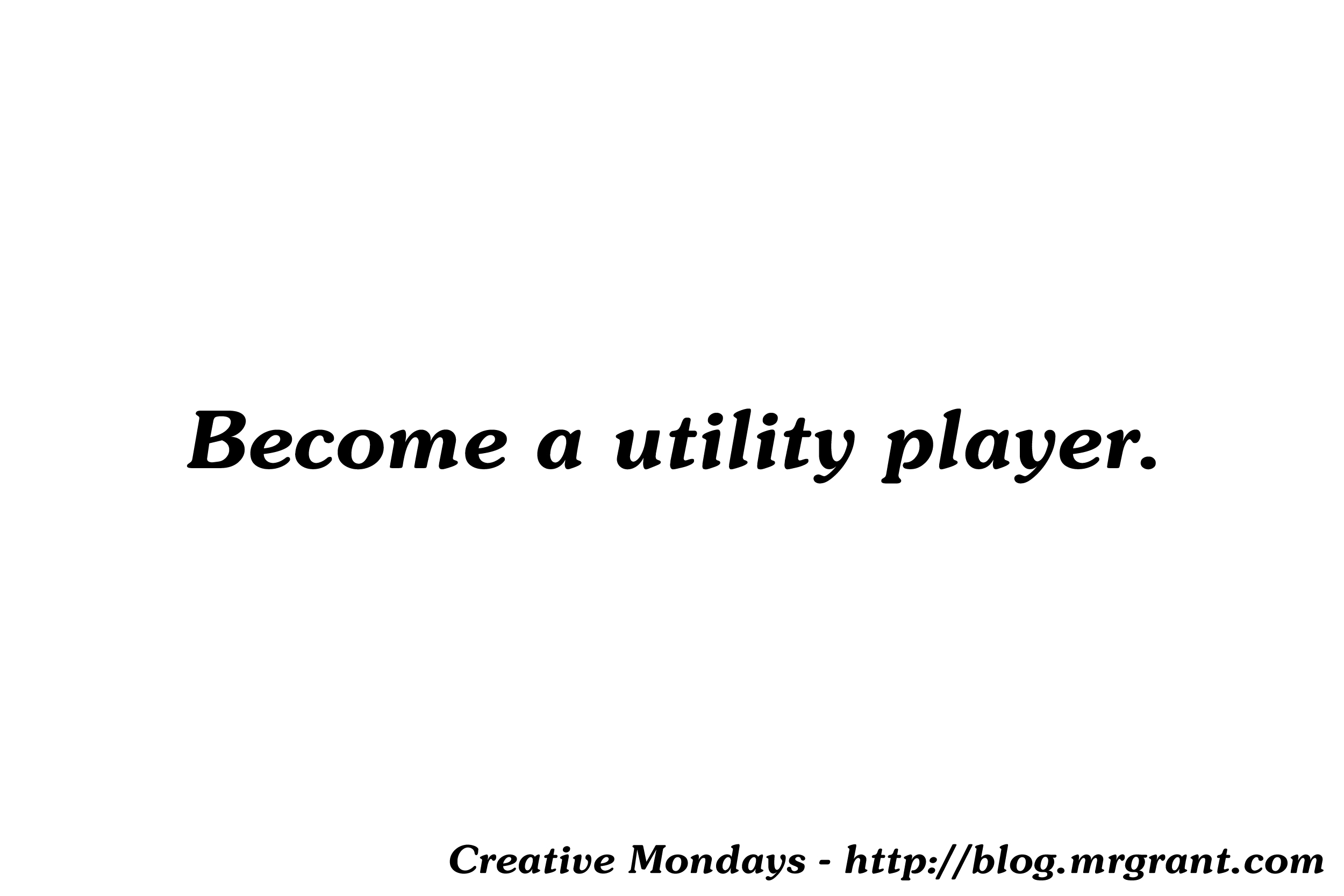Tag: drawing
Creative Mondays #018 – The right people will get this.

“The right people will get this.”
This one one of my all time favorite quotes. It is a quote by Joel Hodgson, creator of Mystery Science Theatre 3000 and Cinematic Titanic. If you have followed my blog or Twitter feed or whatever, you have no doubt read it before. Joel was said it in response if someone asked him if he worried that some people may not get all the jokes on Mystery Science Theatre 3000. His response was, “We never ask, ‘Who’s gonna get this?’ We always say, ‘The right people will get this’.”
To me this statement boils down to not trying to create art for a specific audience. Create art that is wholly and truly for you and it will find an audience. This is what I’ve tried to do in the art I create.
When I came up with the idea of The Radio Adventures of Dr. Floyd based on characters that Doug and I had created, I never had an audience in mind outside of the idea pleased me. I don’t even think at the beginning Doug was all to sure why I wanted to create a silly little radio show based on these characters. But once we got going he got on board full force and the show soon became something that in it’s base elements, just made the two of us laugh. This is how we made the show and the show found an audience.
I will say that we did make a small change in how we wrote the show at the very beginning with the audince in mind. In the beginning we were fine with double entendre. In the Wright Brothers episode the joke was that the Wright Brothers wanted to invent the plane because they were secretly peanut farmers and if they invented the plane, they would required peanuts be served on every flight. One of the Brothers had the line, “Someday the world will know the wonders of our nuts.” (A tip of the hat to the line in the Ren & Stimpy Show’s Rubber Nipple Salesmen episode.) We found this funny, but once we began podcasting and we received emails from families saying how much their kids loved the show we thought twice about doing jokes like that. Other than that though, we did a show that made us laugh.
When ‘Hollywood’ stared calling us talking about the possibility of turning it into a TV show, one of the first questions we would be asked is, “What’s the demographic?” This was so hard to answer because we never, ever, thought about it. We would say it’s a kids’ show or a family show, but we’d never have a specific demographic in mind and that’s what Hollywood wants. A specific demographic. We would say, “Our demographic is everybody.” Because we’d get phone calls from people ages 3 to 80. But Hollywood wanted a specific age range. Did THe Muppet Show have a demographic when it was pitched? If so, I’d say that’s the demographic. Everybody.
With Dr. Floyd, the right people ‘got us.’ They got our sense of humor, our references, our jokes and for a little radio show that was recorded, mostly, in the living room of my tiny, one bedroom apartment, we did pretty good.
So create art that excites you and put it out there. The right audience will find you.
Creative Mondays #017 – Keep moving forward.
Keep moving forward.
Like Dory from Finding Nemo says, “Just keep swimming.” I think this is great creative advice. Keep creating and by this I mean, yes you should create every day, but also work on something, complete it and then move on to the next project.
When we started The Radio Adventures of Dr. Floyd, the first episodes are not really amazing. The sound quality, the pacing, several other little things could use a tweak here or there. But early on in the process we came up with the unwritten rule, just keep going. Get the current episode so it’s the best it can be in a certain time frame and then move on to creating the next episode. This is still a rule I employ today on all the projects I work on.
We could have spent forever tweaking ten different episodes of Dr. Floyd until they were perfect. Instead, when an episode was as good as it was going to be right then, we released it and moved on to the next episode. In the end we had over 150 episodes of the show and that large number of produced episodes impressed people when we went and pitched the show. There were over 150 stories that could be converted to a new format from the start.
Now I’m not saying rush through your project to get a big number, not at all. Wheat I’m saying is know when to say, “This is good enough, let me start the next one.” The great thing about this is you will only get better with each project. Mistakes made on one will be ocrrected in the next. Something that was ‘just quite not right’ about one, will push you to make it more to your liking in the next one.
Being in Los Angeles as long as I have, I’ve known a handful of people who have one script they are constantly working on, tweaking, polishing to get ‘just right’ to pitch. They work years on it when, instead, they could be writing more and more scripts and, with each one, becoming a better writer and building up a great ‘back catalog’ of ideas.
So, just keep creating. Don’t stop. Know when to move on ot the next project and don’t stagnate on one project forever.
—
Do you have a project that you’ve been languishing too long on? What can you do today to start wrapping it up and move onto a new one? Let me know below.
Creative Mondays #016 – Become a utility player.
Here’s another aspect of creativity that I believe is important. That is being a utility player. It’s a sports term and it means someone who is able to play many different positions competently. So, in you art and your creativity, you should strive to become a utility player. I’ll admit this concept may not apply to all fields of creativity, but I think it’s generally a good rule to have in life. The concept is, be good at many different aspects of your field so those in charge have a ton of options to plug you in anywhere. This will show that you can really do anything and it will give you more opportunities to make money.
I first stumbled upon this idea when I started doing my comedy songs at open mic nights in San Francisco. I was a young comedy songwriter who just started going to comedy open mics to play my songs. I started with comedy open mice because I was singing comedy songs, but at the first ‘mixed’ open mic I attended, an open in mic where there was comedy and music and poetry, I realized I could start going to strictly music open mice as well. I found I’d do pretty well at either comedy open mice or music open mice because my act was so different from what else was going on that night. At comedy open mice I stood out because I did funny songs where everyone else was doing straight stand up. At music open mice I stood out because I was doing funny songs when everyone else was doing serious straight songs. This discovery led me to being booked on all sorts of shows because I could fit in with whatever else was going on on the bill. I learned to be a utility player, fit in as many different places you can. You’ll get booked more.
And don’t worry about bing someone who’s just starting out. I think that’s the best time to become a utility player. You aren’t pigeon holed into just being able to do one thing. This concept has really hit home with my work with Puppet Up! Uncensored. When it comes to Puppet Up! I try to be the best utility player I can be and I started the moment I began working with the company. When I was strong enough to do my first shows, I eagerly learned the part in the opening and closing numbers I was in. I learned it to the best of my ability. The next time I was asked to be in a show, they put me in a completely different part in the opening and closing. Instead of complaining, I shut up and learned it and did it to the best of my ability. Next time I was asked to go into another slot and I did it gratefully and willingly. Now there are three different spots in the opening where I can be plugged in. (And I’ve been working on a fourth on my own.)
In the show we have two recreations, I’ve Grown Accustomed To Your Face and Java. When I was asked to learn the spot of Demon Head in Face, I jumped at it. Then I was asked to try out Big Java in Java. Again, no hesitation, I jumped on it. Then I was asked if I wanted to try Lady Singer in Face. You’d better believe I said yes. Same thing with using the Henson Digital Puppetry Studio in that segment of the show. I’ve never been trained on it officially but I’ve fooled around with it enough to be able to do a passable job, so now I can be plugged in there. On top of all this, I was once asked to host the show. A big task, but instead of waffling and saying I was unsure, I shut up, said yes, and did it to the best of my ability. I did a passable job and now have been asked to host the show several times now. By saying yes I created yet another spot in the show I could be plugged in.
All this saying yes came to a head recently where at one of our shows, a performer became ill moments before we started. After a bit of nervousness about this the show worked, Patrick asked who could do certain parts of the show. I was able to say test to just about everything and was able to perform many different roles. I wasn’t really nervous because they were all roles I’d played before and it was a true testament to becoming a utility player.
By eagerly and happily becoming a utility player, you will open yourself up to many more opportunities rather than just specializing on one thing.
—
Are you a utility player? Tell us about where you can be plugged in to many different spots in your field in the comments below!
Creative Mondays #015 – Create outside your skill set.

As an artist, you probably have many areas of art you are comfortable working in and they probably all compliment each other. Looking at my work I’d say my strength is the written word. Writing something that will become something else. Over 150 episodes of Dr. Floyd (some co-written, but most were from my head). The episodes of Did This Happen?, Thunder Crester, The Tales of Deputy Guppy, etc.. And all the projects that never made it anywhere or saw the light of day (at least not yet) Time Skippers, The Cauldron of Hate, The Untitled Western story, Sign Force One and countless others. When I look at my strengths as an artists, I say putting ideas down onto paper (or screen) and forming them into a mildly entertaining story, is probably my biggest strength. Yes, I do comedy, act, improvise and do puppets but my skills in those aren’t as honed as they are in creating stories. Maybe I’m just more comfortable putting ideas down on paper.
Today I want to talk about creating art outside of your area of expertise. Breaking through that ‘comfortable’ barrier and making yourself uncomfortable by creating art in a different medium. If you’re a painter, write. If you’re an actor, dance. Step into another realm of art. I think this can be an extremely valuable experience for many reasons.
The first reason is that it will give you different ways to look at creating. If you’re a painter and you try sculpting or modeling out of clay, you’re going to apply the practices you’ve learned from painting to the sculpting. Being neither a painter or sculptor, I would assume that some of those practices will work and others will not, forcing you to think differently about how you will achieve your creative goals on that project.
I have tried to do this at several times in my creative endeavors and it has always helped me, I feel, become a better artist. I have an iPad and I purchased the super popular app, Paper by Fifty Three when it came out. Playing around with the tools on it really clicked with me and I just began drawing daily. I’ve always enjoyed drawing in the past and would occasionally do it. Deputy Guppy was born out of a comic book I drew in high school. I was always vaguely aware though that my drawings aren’t really that spectacular. On the Paper app though I think my drawings turn out a little better and seeing that result has really inspired me to draw more. This has made me to think differently. How can I capture a feeling, a saying, a song lyric in just a picture? With no words? It forces me to retrain my mind to figure out a way to communicate what I want to say in picture only. This translates back into my writing as well. It makes me think of different ways to say the same idea and try to capture a picture in words.
Another thing creating outside my area of expertise has done is sparked ideas. I have so many random drawing doodles, that have fired up ides for stories in my mind. I started drawing these little figures that I called Dots. Just splotches of paint with arms and legs. Simple, easy to draw. But creating them fueled my story mind and made me think of lots of different stories I could create with these characters and their world. Will I ever do anything with them? Maybe, maybe not. But the simple act of creating outside my strengths inspired me.
Finally, creating outside your area of comfort may lead you into a great idea to combine the comfortable with the uncomfortable. Going back to the painter/sculptor idea above. What if the painter found a way to use sculpture in his or her paintings and came up with a completely new idea they’d never thought of before. I have often wondered how I could combine my writing and stories into some multi media piece that melds to the too. I know you’re saying, “Yeah, Grant, a book with pictures.” But I’m talking maybe a podcast with pictures. Or a story written into the designs of a drawing. Yes, it’s been done before, but not by me. That inspires me.
So take a chance. Get uncomfortable. Try something new and outside your area of expertise. Who knows where it’ll lead?
—
Do you practice art outside your comfort zone? If so, does it help your main passion? If not, what new experiment will you try? Let me know in the comments below!
